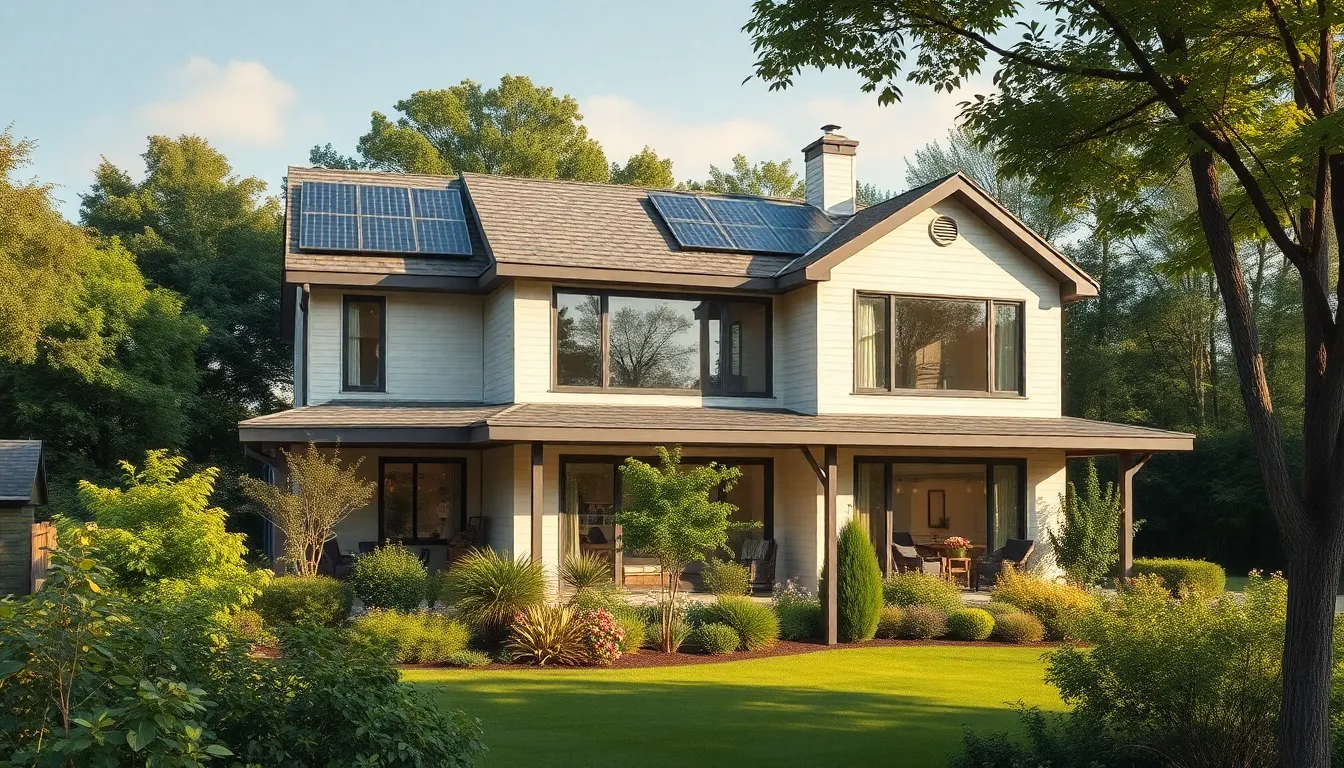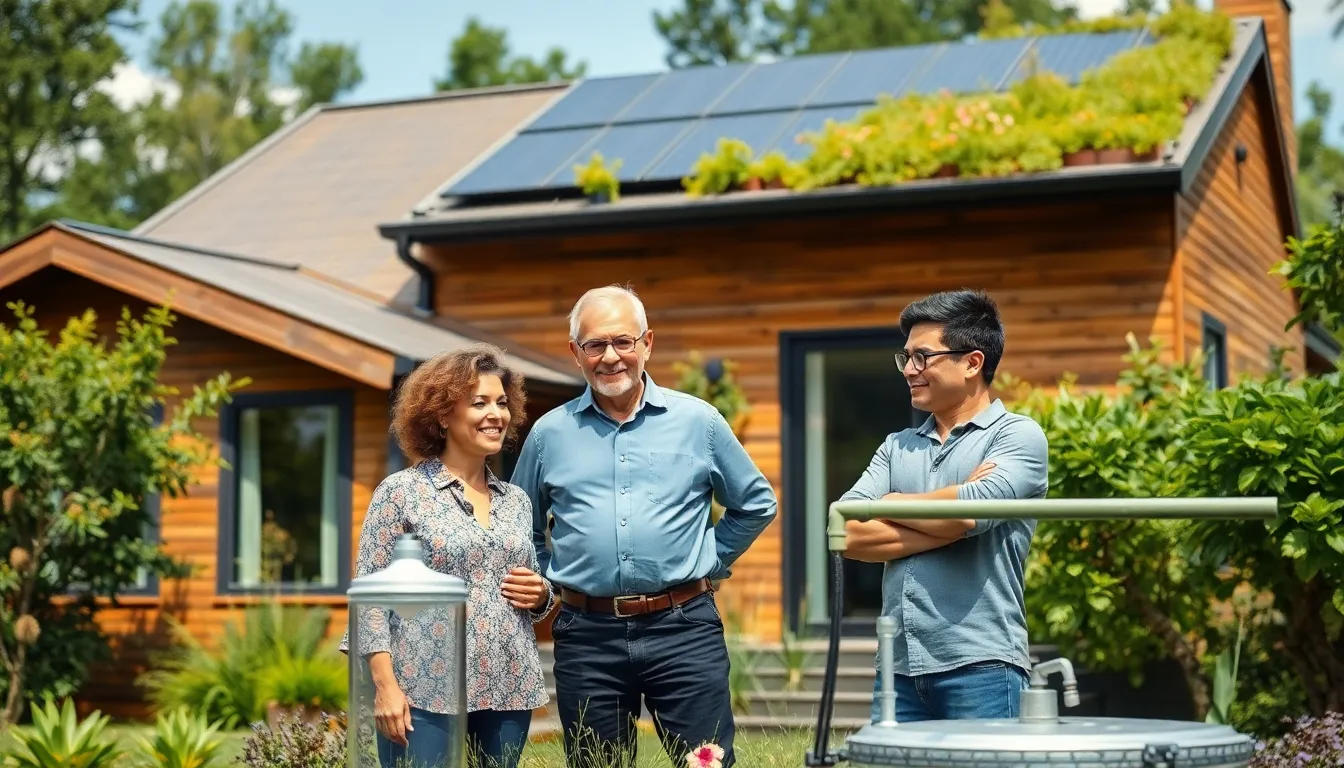Table of Contents
ToggleIn today’s world, the push for sustainability has never been more crucial, and eco-friendly homes are leading the charge. These homes not only prioritize energy efficiency but also promote a healthier environment for both residents and the planet. As more people become aware of their ecological footprint, the demand for sustainable living solutions continues to grow.
Building or renovating an eco-friendly home involves thoughtful design choices, renewable materials, and innovative technologies. From solar panels to rainwater harvesting systems, these features not only reduce energy consumption but also lower utility bills. Embracing eco-friendly living isn’t just a trend; it’s a lifestyle choice that benefits everyone.
Overview of Eco-Friendly Homes
Eco-friendly homes prioritize sustainability through energy efficiency and minimal environmental impact. These residences incorporate innovative designs and technologies that promote a healthier lifestyle for residents and the ecosystem.
Definition of Eco-Friendly Homes
Eco-friendly homes are structures meticulously designed to reduce their carbon footprint and environmental impact. They utilize sustainable materials, maximize energy efficiency, and often integrate renewable energy sources. Elements such as green roofing, efficient insulation, and smart home technologies characterize these residences, enabling lower energy consumption and reduced utility costs.
Importance of Sustainable Living
Sustainable living fosters environmental conservation and resource preservation. It encourages practices like reducing waste, utilizing energy-efficient appliances, and sourcing local materials. Emphasizing sustainability addresses climate change challenges, conserves biodiversity, and supports the well-being of future generations. The rise in eco-friendly homes plays a crucial role in shifting societal norms toward greener living solutions, contributing to a more sustainable future.
Key Features of Eco-Friendly Homes

Eco-friendly homes are designed with a focus on sustainability and resource conservation. These homes incorporate several key features that prioritize energy efficiency, sustainable materials, and water conservation.
Energy Efficiency
Energy efficiency is a hallmark of eco-friendly homes. These homes utilize high-performance insulation to reduce heating and cooling needs. Energy-efficient windows minimize heat loss and gain, while Energy Star-rated appliances lower energy consumption. Additionally, many eco-friendly homes include programmable thermostats that optimize energy use based on occupancy patterns. Systems like solar panels provide renewable energy, significantly reducing reliance on non-renewable sources.
Sustainable Materials
Sustainable materials are crucial in the construction and renovation of eco-friendly homes. Builders often use reclaimed wood, bamboo, and recycled steel, which reduce the need for new resources. Non-toxic paints and finishes improve indoor air quality, while materials sourced locally minimize transportation impacts. Selecting materials with a long lifespan contributes to durability and reduces waste, thereby enhancing overall sustainability.
Water Conservation
Water conservation technologies play a vital role in eco-friendly homes. Rainwater harvesting systems collect and reuse water for irrigation and other non-potable uses. Low-flow fixtures, such as faucets and toilets, reduce water consumption without sacrificing performance. Greywater recycling systems treat and reuse water from sinks and showers, providing additional savings. These strategies not only lower water bills but also promote responsible water usage, aligning with ecological preservation efforts.
Benefits of Eco-Friendly Homes
Eco-friendly homes provide numerous advantages, impacting the environment, health, and finances positively. Their thoughtful designs and sustainable practices contribute to an overall improvement in quality of life.
Environmental Impact
Eco-friendly homes significantly reduce carbon footprints through energy-efficient designs and renewable resources. They utilize sustainable materials, which lower the demand for virgin resources, preserving natural ecosystems. Implementing features like solar panels and rainwater harvesting systems decreases reliance on fossil fuels and conserves water, further decreasing environmental degradation. According to the U.S. Green Building Council, green buildings can reduce energy consumption by up to 30% compared to traditional structures, supporting a healthier planet.
Health Benefits
Eco-friendly homes enhance indoor air quality, reducing exposure to harmful pollutants. The use of non-toxic materials and finishes prevents toxic off-gassing, lowering the risk of respiratory issues and allergies. Enhanced ventilation systems ensure a flow of fresh air, improving overall well-being. Energy-efficient lighting, such as LED bulbs, emits less heat and reduces eye strain. With these improvements, occupants experience better health outcomes, contributing to a higher quality of life.
Financial Savings
Investing in eco-friendly homes leads to substantial long-term financial savings. Energy-efficient appliances lower utility bills, with some homeowners reporting savings of 20-30% annually. Installing renewable energy systems, like solar panels, can lead to reduced electricity costs, with some systems paying for themselves within 5 to 10 years. Additionally, eco-friendly homes often have higher resale values, as buyers increasingly seek sustainable living options. As a result, financial incentives secured through tax credits and rebates further lower overall ownership costs, making these homes both economical and environmentally responsible.
Popular Types of Eco-Friendly Homes
Eco-friendly homes come in various forms, each designed to enhance sustainability while minimizing environmental impact. Here are several popular types of eco-friendly homes.
Solar-Powered Homes
Solar-powered homes integrate photovoltaic panels to harness sunlight, converting it into electricity. These homes often achieve energy independence, significantly reducing reliance on traditional power sources. In addition, solar-powered systems may include battery storage, allowing homeowners to store excess energy for use during non-sunny periods. The combination of energy efficiency and renewable technology boosts overall energy savings and reduces greenhouse gas emissions.
Tiny Homes
Tiny homes emphasize minimalistic living, with a typical footprint of 100 to 400 square feet. These homes utilize space efficiently—often featuring multi-functional furniture and smart layouts. By occupying less land, tiny homes minimize ecological footprints and resource consumption. Many tiny homes incorporate sustainable materials and energy-efficient practices, promoting a lower environmental impact while fostering a lifestyle centered around sustainability and simplicity.
Green Roofs
Green roofs involve planting vegetation on rooftops, which offers numerous environmental benefits. These roofs improve insulation, reducing heating and cooling costs while managing stormwater runoff. Green roofs also support biodiversity by providing habitats for various species, contributing to urban ecosystems. Furthermore, they enhance air quality and contribute to temperature regulation in urban areas, promoting overall environmental health.
The shift towards eco-friendly homes represents a significant step in creating a sustainable future. By embracing energy efficiency and innovative design, homeowners can contribute to environmental health while enjoying numerous benefits. Sustainable living not only reduces carbon footprints but also enhances indoor air quality and promotes responsible resource use.
As more individuals recognize the value of eco-friendly practices, the demand for sustainable homes will continue to grow. This trend fosters a culture of conservation and responsibility, encouraging communities to prioritize environmental well-being. Ultimately, eco-friendly homes are more than just a trend; they’re a vital component of a healthier planet and a more sustainable lifestyle.





